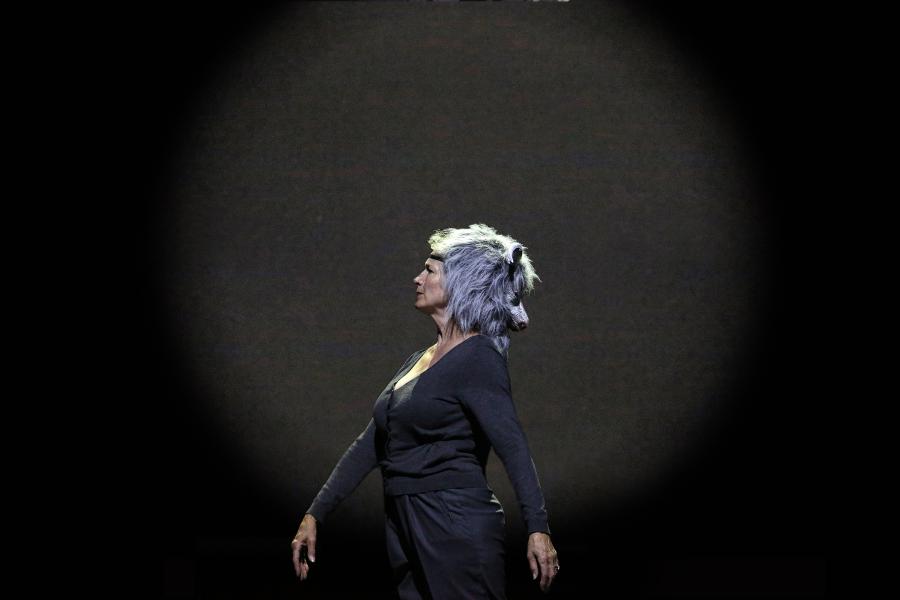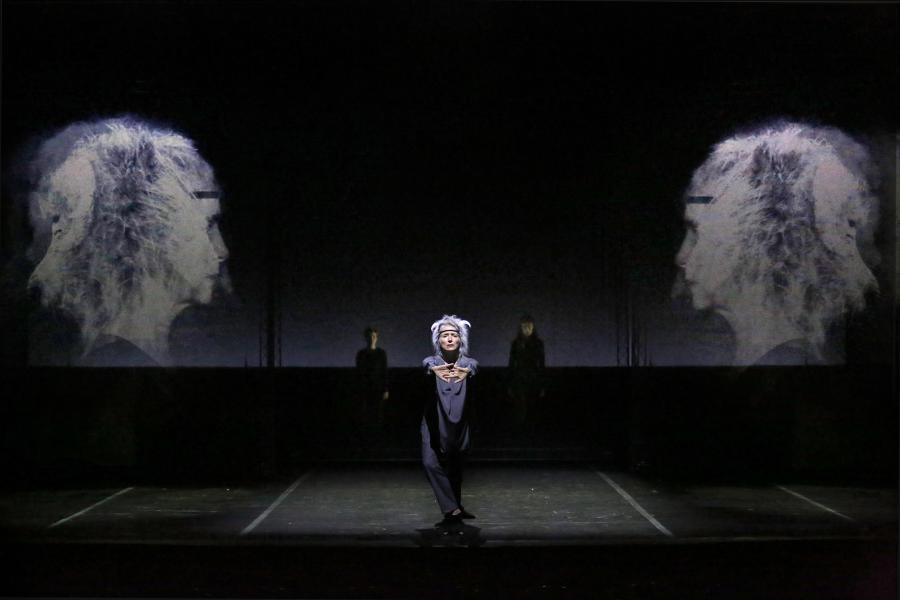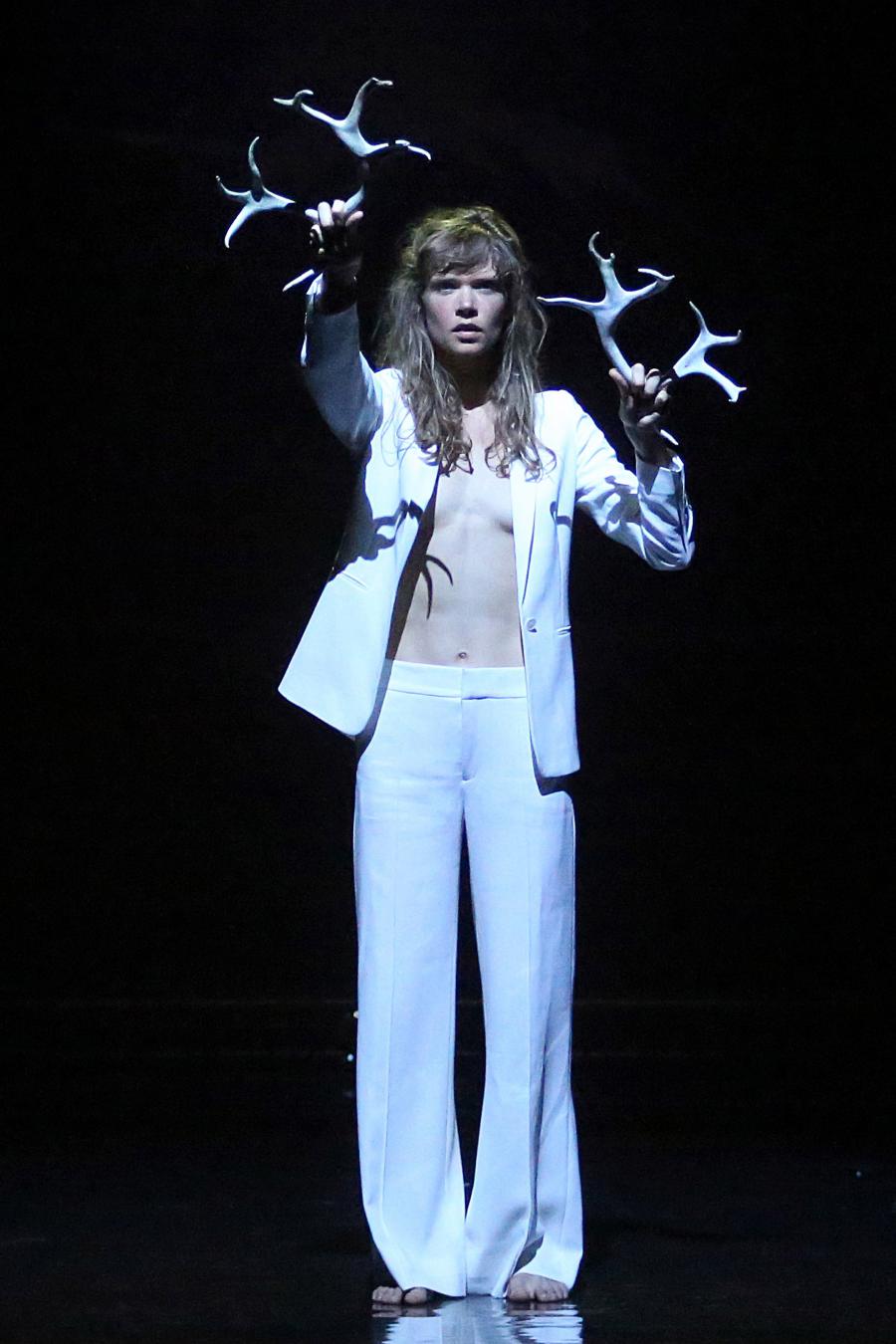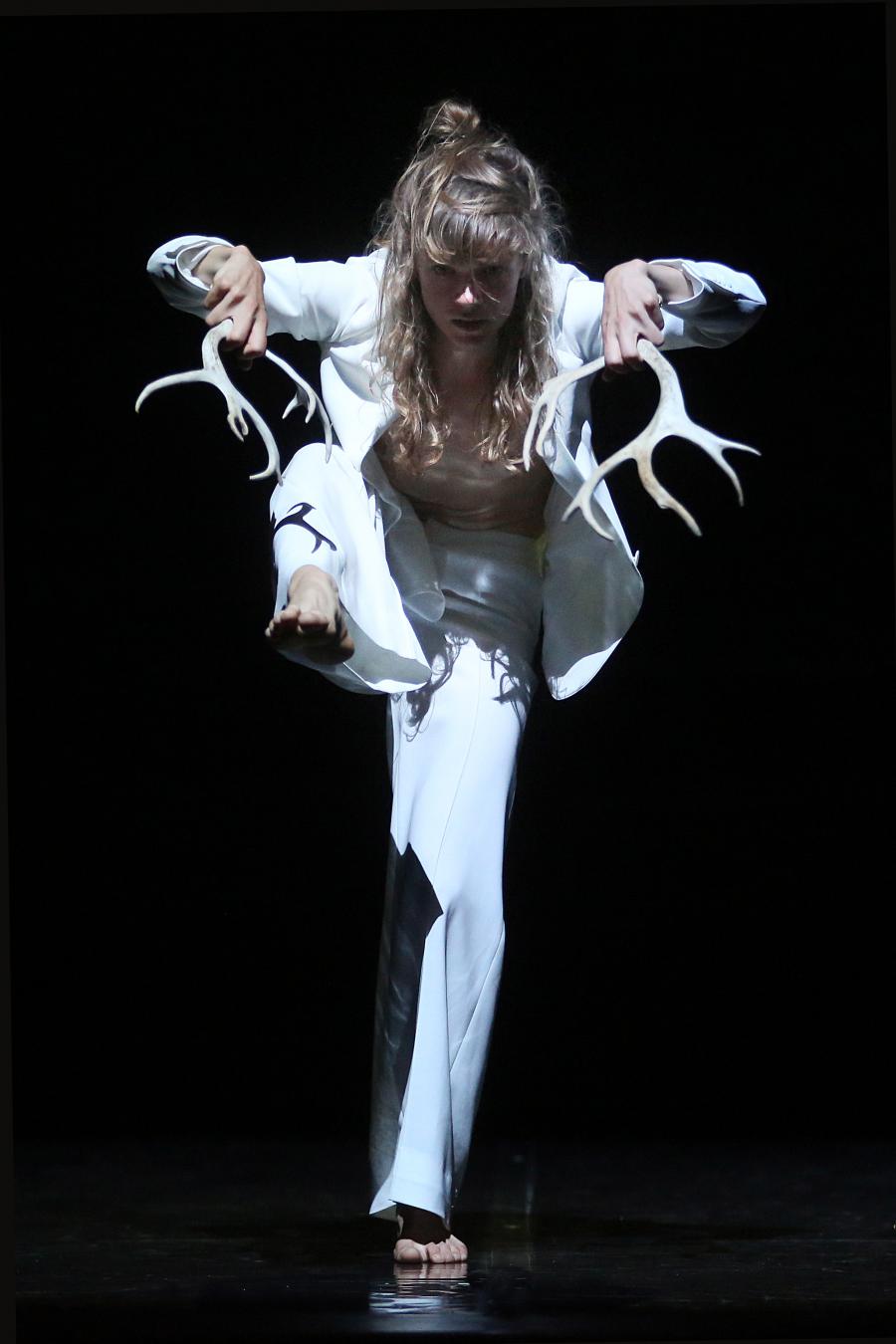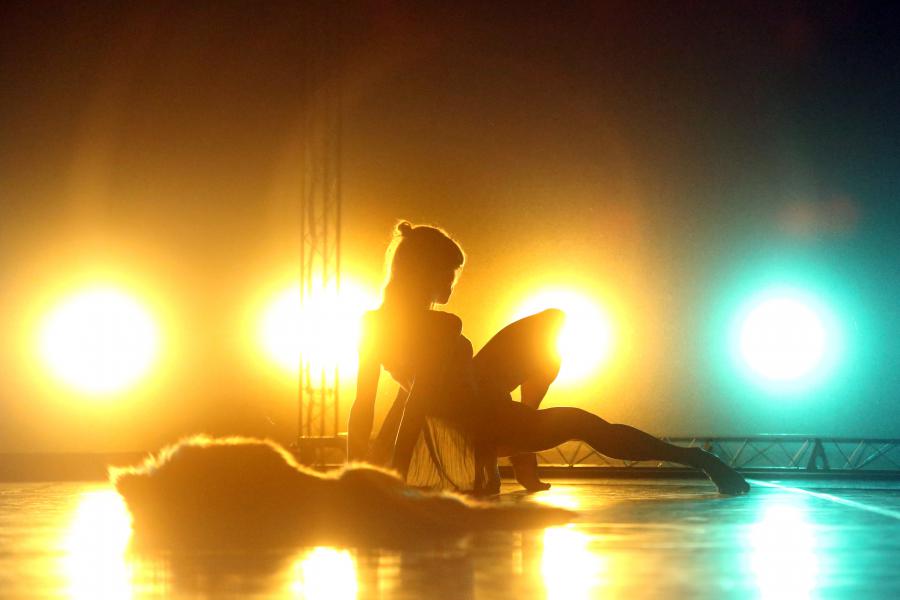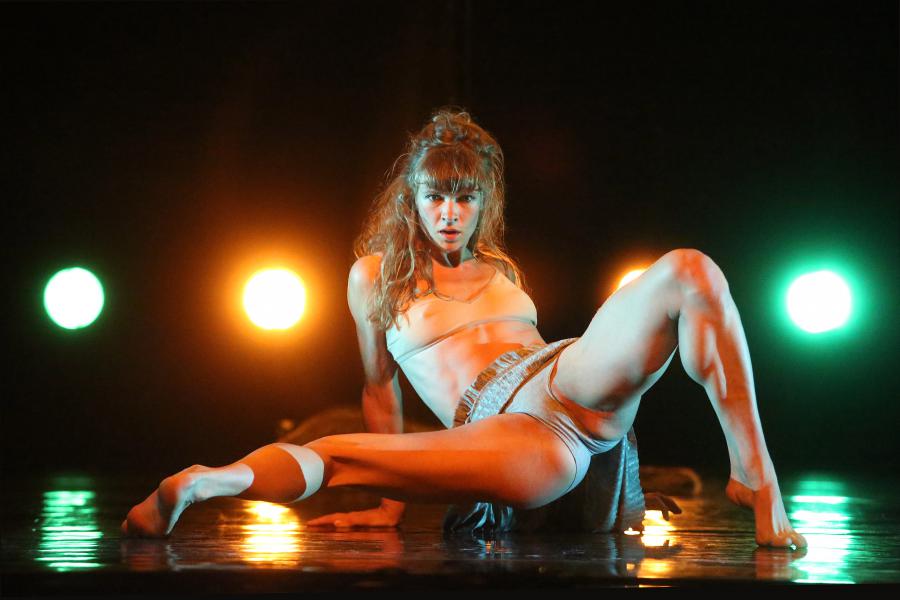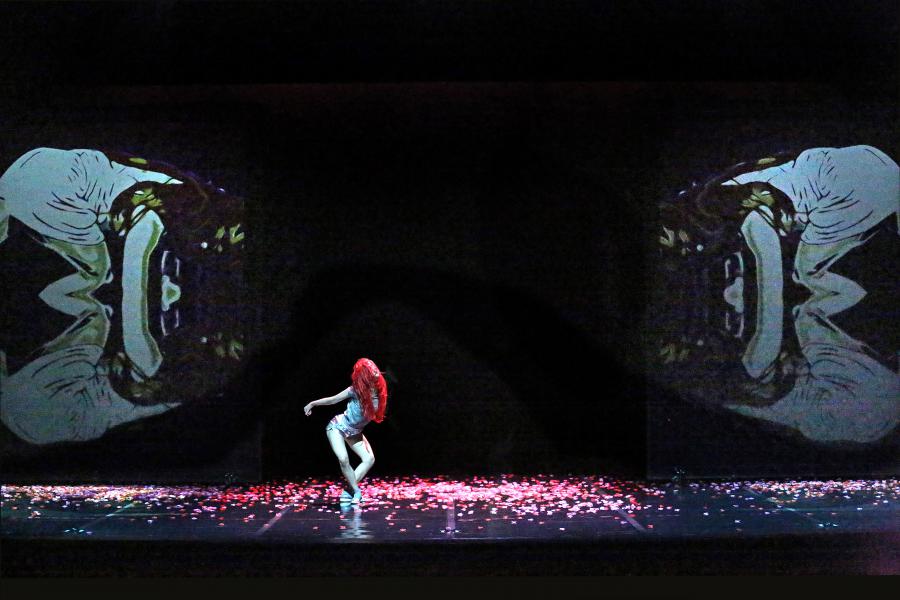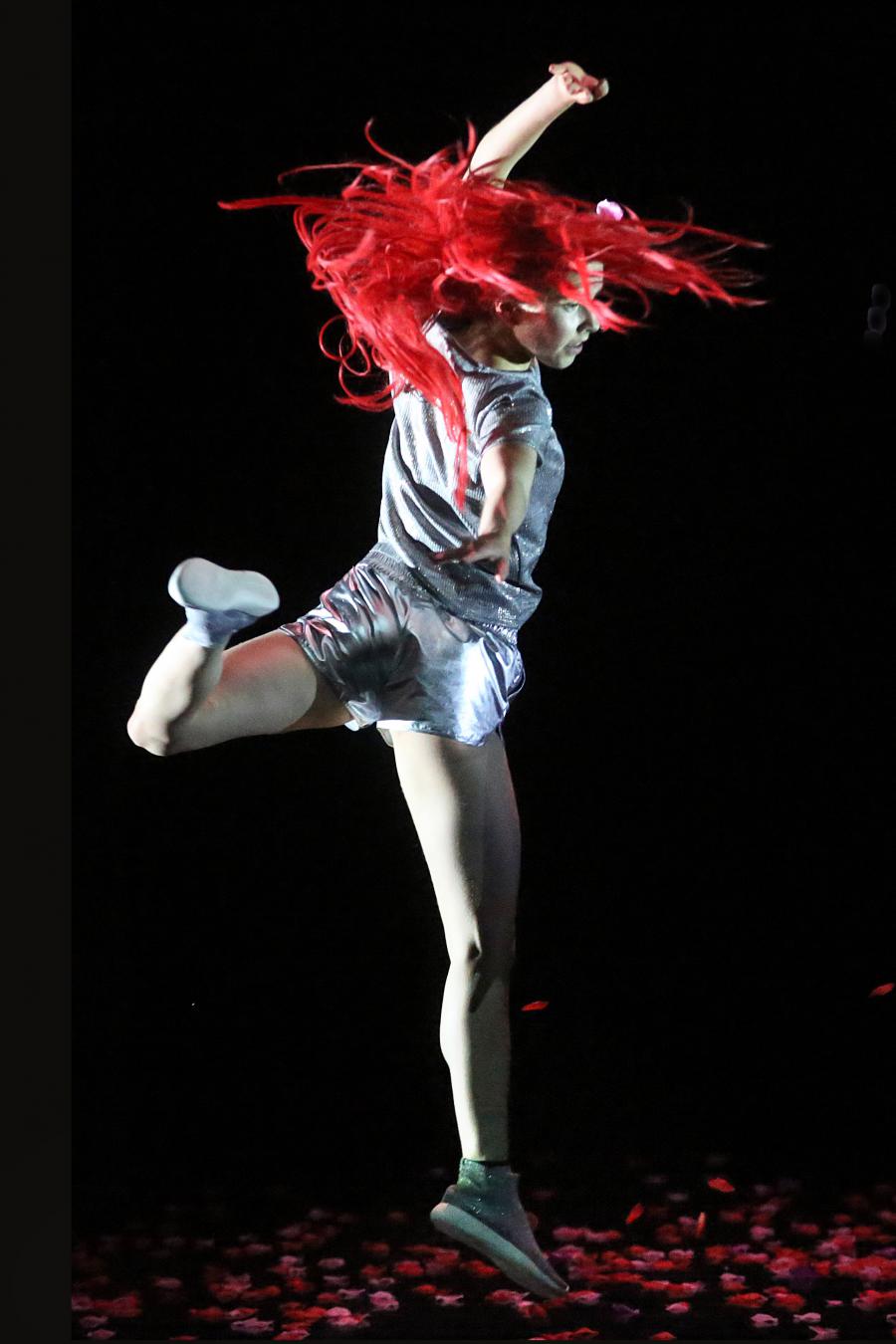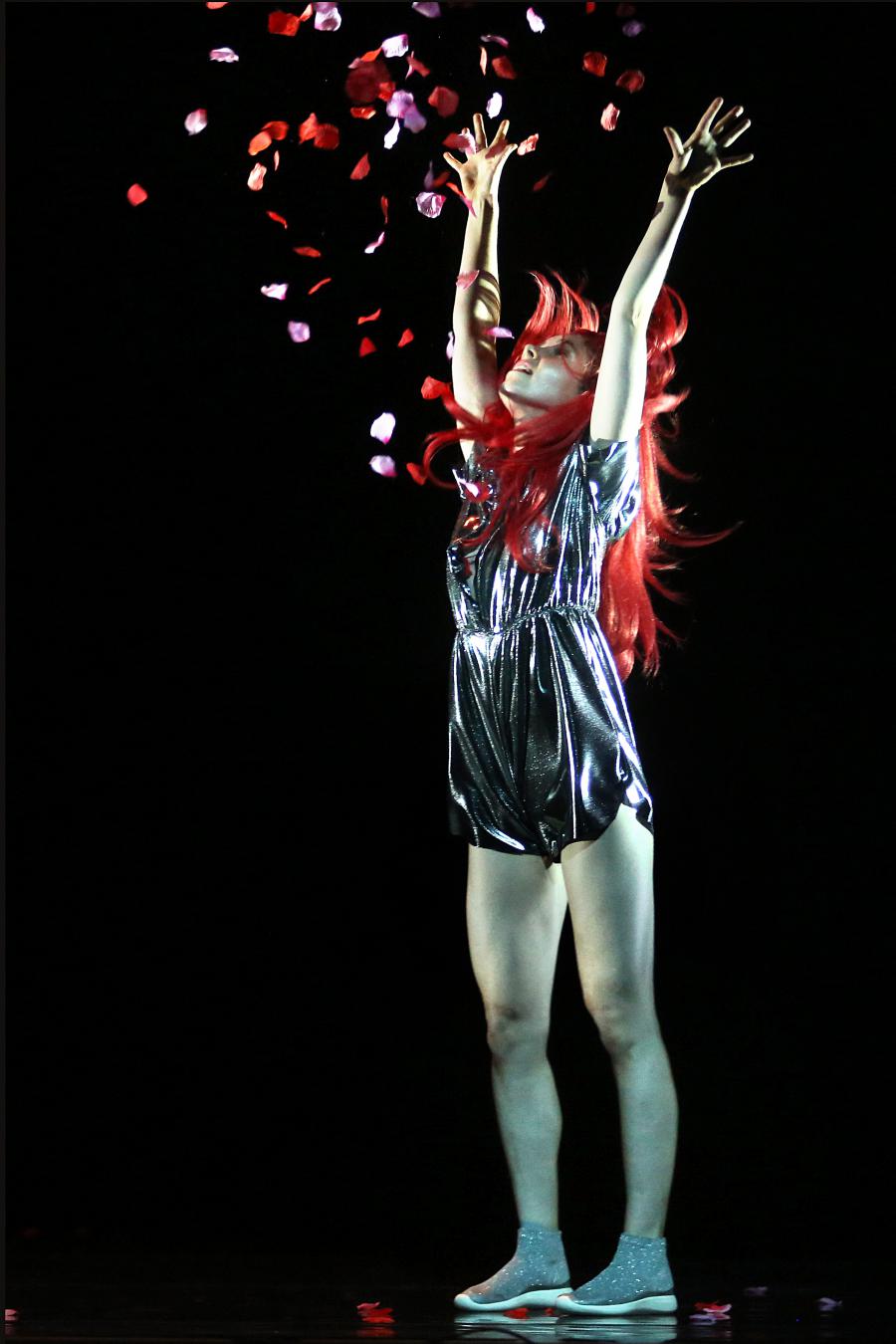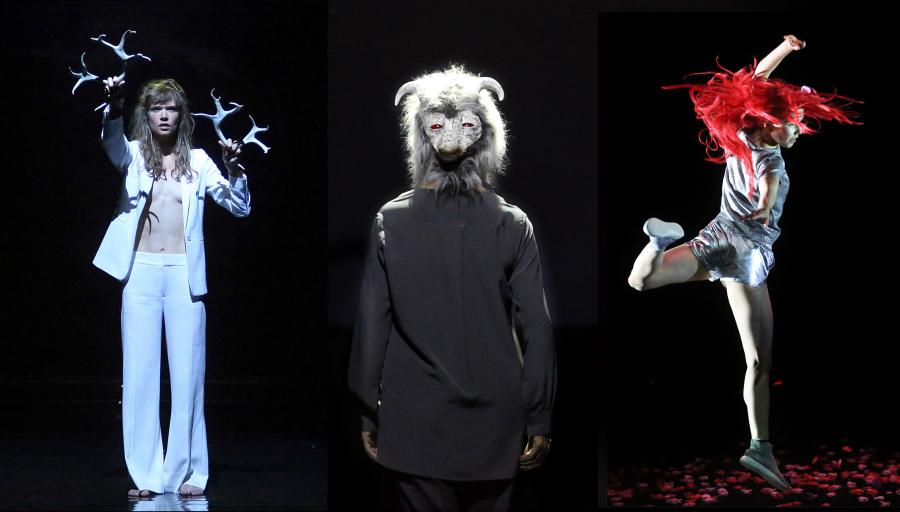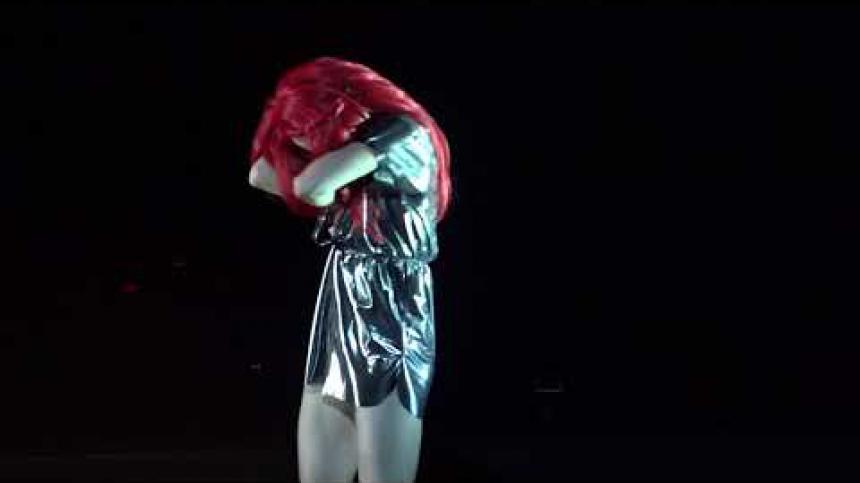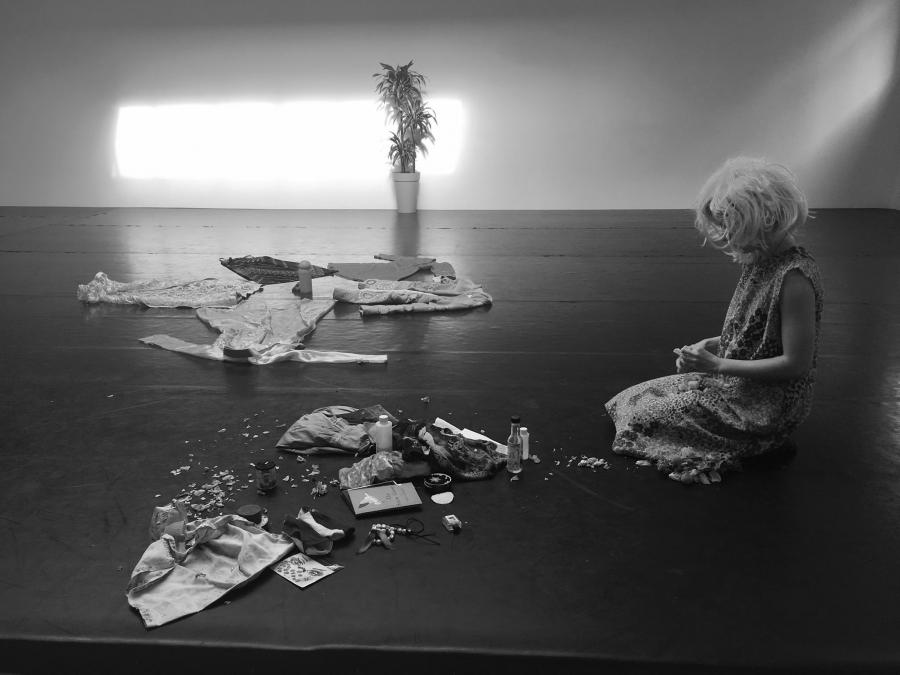In 7: TRIPLE MOON - the third and final part of her Bauhaus-trilogy exploring basic geometric shapes, Nicole Beutler takes the triangle as her starting point. In our Western (Christian) culture the triangle and the number three are often charged with a spiritual significance. First and foremost it is a reference to the Holy Trinity of the Father, the Son and the Holy Spirit. With the female trinity of the Maiden, Mother and Crone, Nicole offers a pagan female alternative.
7: TRIPLE MOON shows three danced portraits, in which the different stages in the life of a woman are embodied by an ex-ballerina, an experienced performer and a young dancer. Strong and fragile, naive and accurate, mundane and ephemeral. The metaphysical, spiritual aspect of the magical triangle is reflected in a staged illusion.
In collaboration with filmmakers/artists Helena Muskens & Quirine Racké
REVIEWS
-
7: TRIPLE MOON
"With her investigative spirit, choreographer Nicole Beutler positively distinguishes herself in dance. Sometimes, however, this added value is her pitfall, as with 7: Triple Moon, the last part of her 'Bauhaus triptych' about geometric shapes."
-
A WONDERFUL COMBINATION OF ART AND KITSCH
Nicole Beutler's new performance premiered yesterday during Julidans. In addition to the usual team of Gary Shepherd (sound) and Minna Tiikkainen (lighting), 7: Triple Moon also involved video artists Helena Muskens and Quirine Racké. Moreover, Triple Moon is the last part of a triptych in which Beutler works from primary geometric shapes, and uses them mainly as a model for symbolic ordering. After the circle and the square, it is now the turn of the triangle to close the gate. Beutler wants to replace the patriarchally arranged trinity of Christianity with a pagan trinity of girl, woman and old mother.
[…]
The enormous amount of text on tape […] seems to suggest that we are out of time in Triple Moon and that the three female roles of Hlíf Svavarsdottír, Marjolein Vogels and Madelyn Bullard are stages in a universal development. Where writers such as Virginia Woolf or Marguerite Yourcenar redefined the relationship to patriarchy on the basis of fictitious histories of historical figures, Beutler seeks it in a supposedly timeless prehistoric pantheism. You could therefore better describe the performance as a ritual installation, in which the same stages are passed through time and time again.
[…]
Bauhaus, of course, has remained a hit long after the revolutionary times of the Interbellum, due to its formidable aesthetics. But in the beginning it was also intended as a movement that would improve the world through beautiful and functional utensils. Perhaps Beutler wants to compete with fantasy and sci-fi with Triple Moon, where our children have to find their heroines.
Cast & Credits
Idea / direction / choreography: Nicole Beutler
Co-creation & Performance: Madelyn Bullard / Marjolein Vogels / Hlif Svavarsdottir
Voice: Claire Marshall (Forced Entertainment)
Scenography / video: Helena Muskens & Quirine Racké
Soundscape: Gary Shepherd with guest musician Rafa Mateos
Lighting design: Minna Tiikkainen
Costume:Martijn van Strien
Choreographic assistance & Rehearsal Director: Hillary Blake Firestone
Dream work: Mala Kline
Artistic advice: Martin Butler
Dramaturgic advice: Igor Dobricic
Main technician: Hans-Peter Hulsscher
Technique: Michael Yallop, Karl Klomp, Niels Runderkamp
Stage hand & assistance on tour: Joao Dinis Pinho
Intern & understudy: Daniel Barkan
Many thanks to: Robert Steijn, Liat Waysbort, Ron Wright, Matt Jackson
Made possible with the support of KC BUDA, De Meervaart
With the generous support of: Ammodo, and the structural support from the Dutch Performing Arts Funds (FPK) as well as the Amsterdam Fund of the Arts (AFK)
A Nicole Beutler Projects Production

